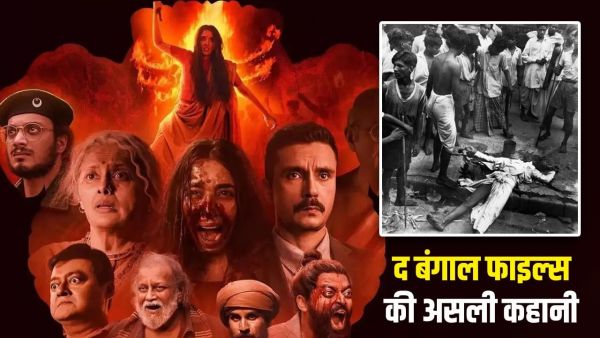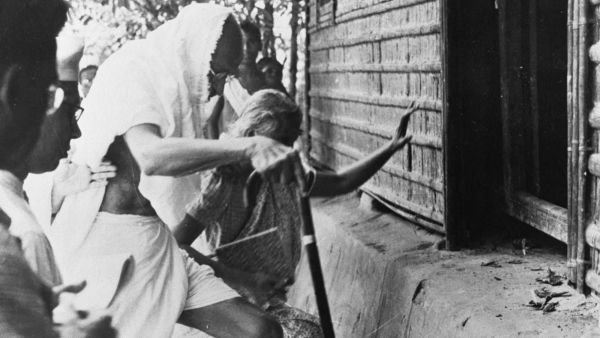

The story of the film The Bengal files is based on the Calcutta massacre and Noakhali riots.
Vivek Agnihotri's film The Bengal files are being discussed a lot in the country these days. On September 5, the film is releasing for the audience of India, but its broadcast has been stopped at many places abroad. Vivek had earlier also made The Kashmir files and The Tashkent Files. Do you know that the fabric of the film is woven around which real incident?
In the last years of India's independence struggle, the politics of the country went through a special turn. On the one hand, the hold of the British rule was getting weaker, on the other hand, there was a deep division of Hindu-Muslim politics about what would be the nature of independent India.
In this background, the Great Calcutta Killing of 1946 and the gruesome incidents of Noakhali riots took place after this. The basis of the film The Bengal files is based on both these incidents. These incidents proved to be a decisive turn not only for Bengal, but also for the partition and communal politics of the whole of India.
By the 1940s, the Muslim League started supporting two-nation theory openly. The demand for Pakistan under the leadership of Mohammad Ali Jinnah had intensified. On the other hand, the Congress wanted to see independent India as a secular, integrated nation. The Lahore proposal of 1940 became the basis of this policy of the Muslim League. In Bengal, where there was a huge imbalance in the Hindu and Muslim population, it became more sharp.
Historian Bipan Chandra has written in his book "India Struggle for Independence" that Bengal had become the focal of communal tension at that time. The regime here was also in the hands of a Muslim League government, whose Chief Minister was Huseyn Shaheed Suhrawardy.

The corpses spread in the streets of Calcutta and the desolate villages in Noakhali tell its story. Photo: Getty Images
On 16 August 1946, the Muslim League called for Direct Action Day. Its purpose was to keep the demand of Pakistan clearly and decisively by putting pressure on the British and Congress. That day a large rally of the Muslim League was called in Kolkata (then Calcutta). The government administration did not take concrete steps to stop this rally. As a result, widespread violence erupted in Calcutta. In this incident known as Great Calcutta Killing, Hindu-Muslim riots continued for four days.
The violence was so intense that according to official data, more than five thousand people were killed, while more than 15 thousand were injured. About one lakh people became homeless in this incident. According to historian Sugata Bose's book Modern South Asia: History, Culture, Political Economy, the murder was the result of the British government's divide and rule policy and the biased role of the local government.

Mahatma Gandhi visited the part where thousands of Hindus were slaughtered. Photo: Getty Images
Two months after the Calcutta murder, the fire of violence erupted in Noakhali district of Bengal (today in Bangladesh). In October 1946, there were massive attacks on Hindus here. The houses were burnt, religious places were damaged and a large number of Hindus were forced to convert.
According to government records, thousands of Hindus were killed and millions were displaced. Mahatma Gandhi took a personal initiative and visited the region and tried to spread the message of non -violence and peace there. Noakhali riots left deep insecurity and pain in the minds of Hindu society just before independence.
The importance of these events was not only limited to the then communal tension, but he played an important role in determining the direction of India's future.

Mahatma Gandhi visited the spot. Photo: Getty Images
Bipan Chandra considers this murder in his book India Struggle for Independence as a common failure of the British L and Muslim League. Sugata Bose has clearly recorded in his book Modern South Asia that he has a compulsory result of the policies of British colonialism
Telling The British-Indian documents have also accepted that the administration failed to stop both these gruesome incidents. In this way we can say that the Calcutta murder case of 1946 and Noakhali riots are very sad chapters of the Indian independence movement.
The corpses spread in the streets of Calcutta and the desolate villages in Noakhali were not only the story of communal violence, but also the preamble of the partition of India. These incidents taught how politics and power struggle can break the society on religious grounds.